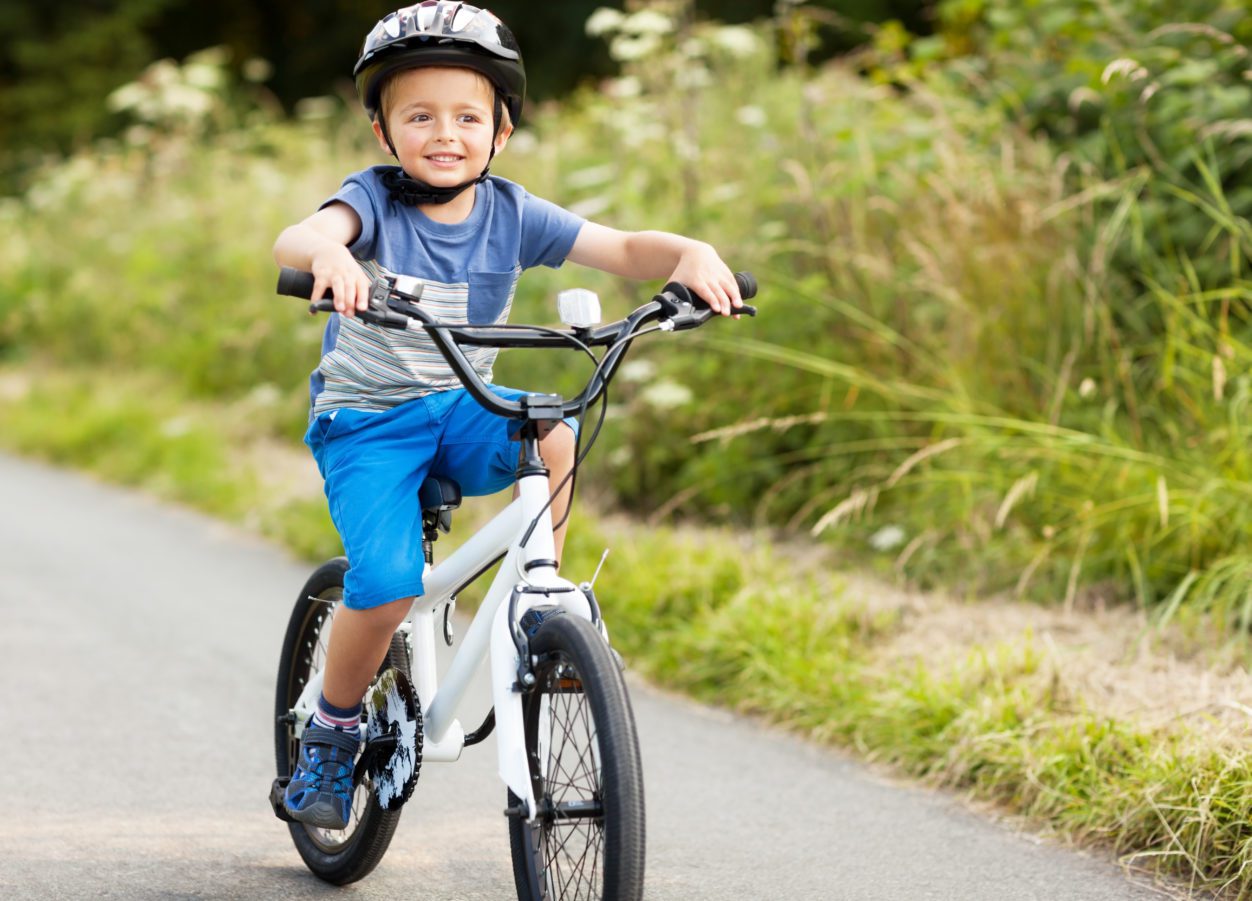Many parents gave a huge sigh of relief as children headed back to school. No more giving bored kids suggestions as to how to occupy their time, or finding caregivers for the kids. Lots more juggling of schedules, and figuring out how to get the kids to and from school. One healthy option is to have your kids ride their bikes to school during the fall and spring, when the roads are free of ice or snow.
However, before you tell your children to bike to school, parents must consider a host of factors; where is the school located in relationship to your home, what type of roads would your children be riding on (suburban roads, crossing busy intersections, roads with or without bike lanes), is their bike properly equipped (front and rear lights, bell, reflectors, properly working brakes, and a saddle bag to carry books), and most importantly does your child fully understand and apply the principals of safe biking.
Children often perceive traffic and rules of the road differently than adults. They become distracted and have trouble concentrating. They are often poor judges of time, speed and distance, and their judgement about what is safe and what is not safe is often impaired. Thus, the first thing a parent needs to assess is; will my child be safe riding his bike to school?
Here are 10 tips to help parents ensure that the answer is yes:
- Make sure your child has a bike helmet and wears it at all times. In British Columbia it is mandatory for all cyclists to wear helmets, unless they are exempt for religious reasons. Children often fall off their bicycles at low speeds, and a helmet can prevent them from having a head or brain injury. If the helmet has been in a crash already, replace it with a new one.
- Make sure your child wears bright clothing that is visible. The easiest way to do this it to have a vividly coloured or florescent vest they wear over their clothes, when biking.
- Determine the best route for your child to travel to and from school, and bike the route with your child a few times before they do it on their own.
- Take your child to an intersection they will be riding through on their way to school. Have your child identify the parts of the intersection; lanes, curbs, sidewalks, crosswalks, traffic lights and bike lanes. Watch the traffic, pedestrians and other cyclists go through the intersection and let your child talk about what they will see as they proceed through the intersection. Talk about how drivers don’t always drive properly, and the dangers this poses for cyclists.
- Ensure that your child understands traffic signals, including stop, yield, and one way road signs, as well as traffic lights including what a yellow light means. A child must understand that the traffic signals apply to cyclists, in the same way it applies to motor vehicle drivers.
- Ensure your child knows where they are required to ride on the road. Cyclists must ride in the same direction as the traffic, and the Motor Vehicle Act requires that they ride as near as practicable to the right side of the road (although they are not required to ride on unpaved sides of the road). Make sure your child knows that they must ride single file, and not to ride on the sidewalk or through crosswalks. If there are bike lanes, make sure your child knows how to use these, particularly when riding through intersections.
- Ensure your child understands how to use their eyes when riding their bike. Be sure to watch for car doors opening when riding near parked cars, to watch for pedestrians and dogs that might suddenly walk into their path, to look in all directions and listen before entering intersections, and to watch for work on roadways or other traffic obstacles. Make sure your child knows to leave the electronics off when biking – no ear buds!
- Ensure your child knows how to use arm signals and why they are necessary to use. Drivers can’t read a cyclist’s mind when they are going to turn left.
- Talk to your school, about whether they have a bike safety program. ICBC has a “Bike Smart” curriculum developed to assist educators teach bike safety to children. Does your school teach this or a similar course? Do the local police teach a bike safety course at your school? If your child’s school has these courses, have your child attend.
- Kids love to fool around on their bikes; racing their buddies, doing tricks. Children should have lots of fun with their bikes, but they need to know that the horsing around needs to be done at bike parks, in fields and off road trails.
Riding a bike is an important rite of passage for a child – it is fun, healthy, gives kids a sense of responsibility, independence and adventure. As a parent making sure your kids know the correct way to bike, means your children will only have happy memories of riding.
For more information on protecting your kids, be sure to check out our article on Cyberbullying and the surrounding laws in BC.
The information provided above is for educational purposes only. This information is not intended to replace the advice of a lawyer or address specific situations. Your personal situation should be discussed with a lawyer. If you have any questions or concerns, contact a legal professional.

